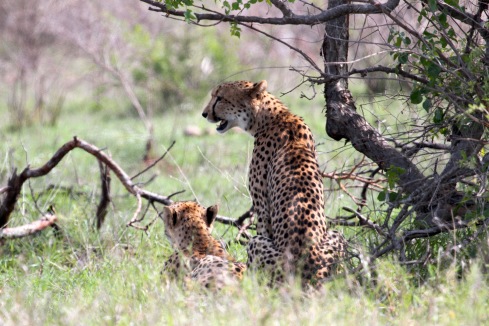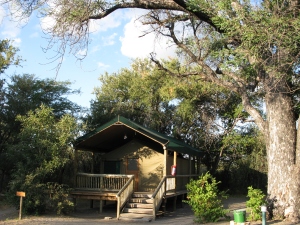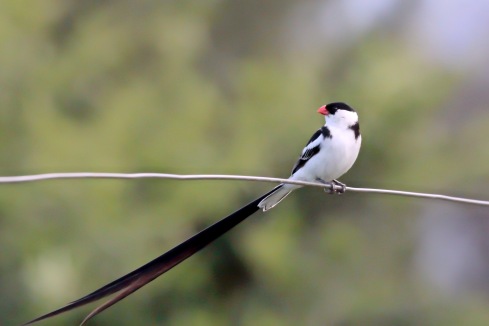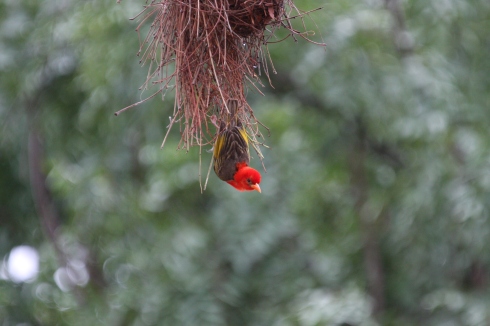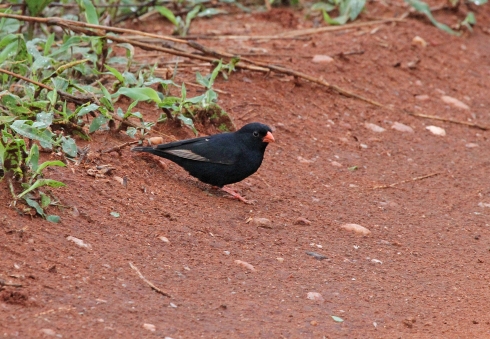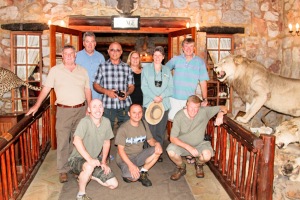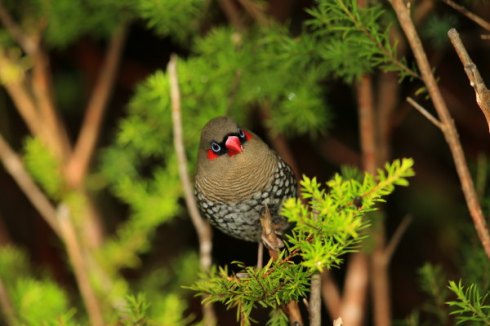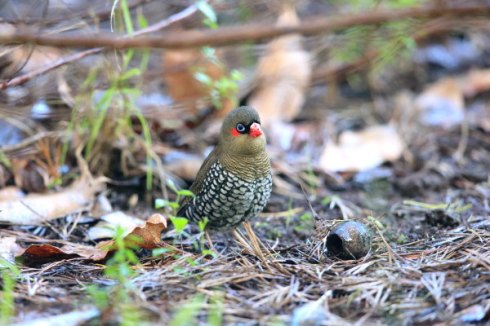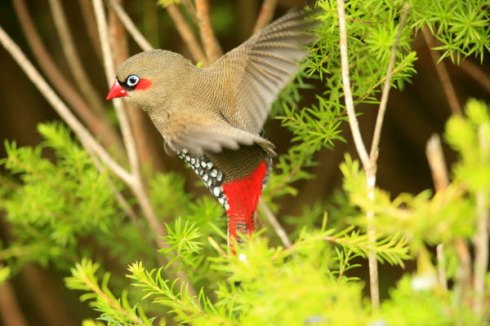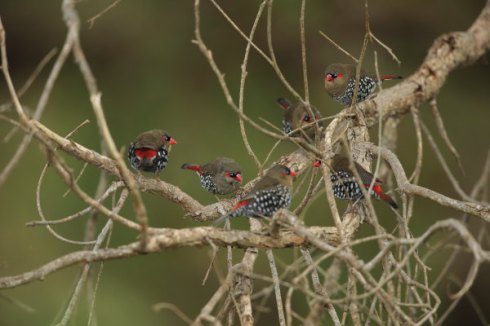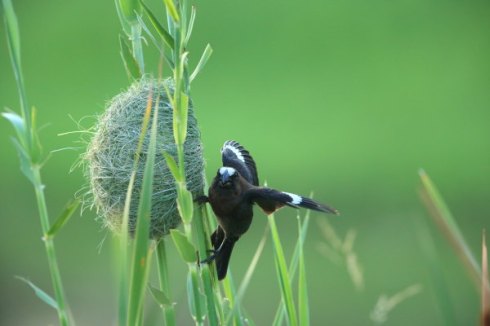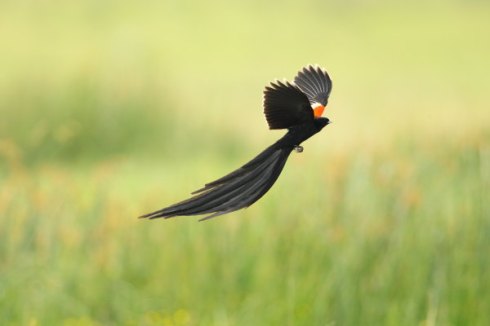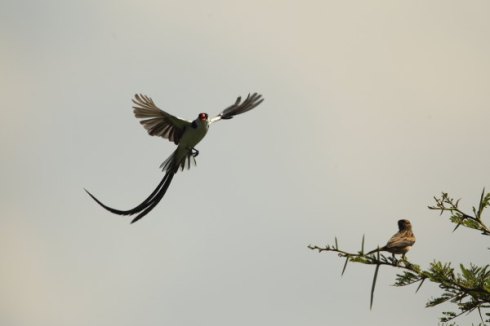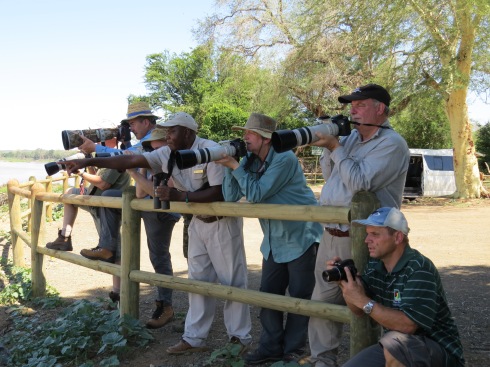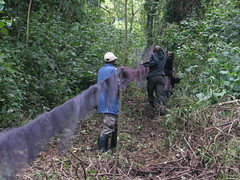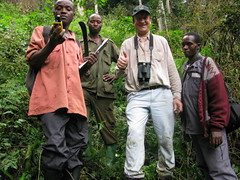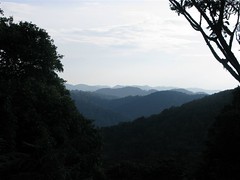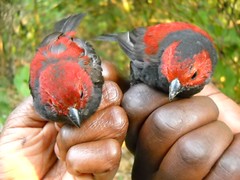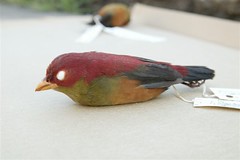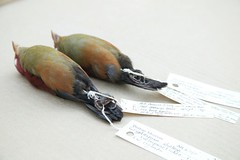-
Join the 2014 RFCG EcoTour to Africa. Following last year’s highly acclaimed tour it’s been decided to organise another tour this year following the same itinerary. The 23 day EcoTour to South Africa, Botswana and Zimbabwe will depart from Sydney 21 November and return 14 December*. The tour has been designed to not only see a lot of Africa’s impressive wildlife, but to take maximum advantage to see many of Africa’s wonderful weavers, whydahs and widow finches in their summer nuptial plumage ( Some of the magnificent finches that our guests can expect to see are: Long-tailed Widowbirds, Red-collared Widowbirds, White-winged Widowbirds, Golden Bishops, Red Bishops, Pin-tailed Whydahs, Paradise Whydahs, Shaft-tailed whydahs, Steel-blue widow finches, Black widow finches, Village indigo birds, Dusky indigo birds, Masked Weavers, Thick-billed weavers, Red-headed weavers, Red-billed buffalo weavers, White-browed sparrow weavers and with a bit of luck the spectacular Broad-tailed Paradise whydah plus many of their host species such as Melbas, Violet-Eared waxbills, Scaly feathered finches, Common waxbills, Black-faced waxbills plus many, many more )
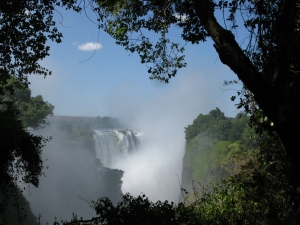
We will be looking for Red Billed fire finches and Blue waxbills next to the mighty Victoria falls in Zimbabwe. Phote Eelco Meyjes
The trip will include a 6 day stay in the world famous Kruger National Park at different camp sites. From there the tour will move onto Botswana to experience the majestic and silent beauty of the Okavango Delta. A 3 day stop over near the Chobe river game reserve, in Northern Botswana, has also been included not to mention a visit to the mighty and thunderous Victoria Falls in Zimbabwe, where we should see red billed fire finches and blue waxbills in the Victoria Falls rain forest nature reserve. All along the route, between these three countries, the group will stop at various key locations to see many of Africa’s most beautiful finches.
Accommodation will be comfortable and every effort will be made to ensure that this tailor made finch safari is a truly once in a lifetime experience for all our guests. The tour will once again be hosted by Russell Kingston and Eelco Meyjes. Space is limited to a maximum of 8 guests only. This is to ensure best viewing opportunities. All guests will be required to sign an indemnity prior to the tour commencing
For more information on this exciting 2014 summer RFCG EcoTour to Africa contact RussellKingston indruss@bigpond.com or Eelco Meyjes editor@avitalk.co.za.
* Guests can come from any country, but everyone will need to be in Johannesburg on Saturday 22 November at the commence of the tour.
All profits are donated to the Rare Finch Conservation Group which is a registered non-profit organisation.This specialist conservation group is totally dependant on donors and sponsors to carry out its conservation work on finches in the wild.
SEE – CONSERVE – ENJOY

